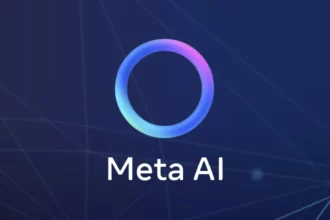ChatGPT often provides references that users cannot find or verify. This happens because the model generates text based on patterns rather than accessing real-time information or databases. Users should treat such citations cautiously, verifying independently when needed.
ChatGPT is designed as a predictive language model. It creates responses by anticipating plausible sequences of words learned from vast data. It does not function as a search engine or a digital library for academic sources. This distinction explains why it sometimes invents references.
Many users report that ChatGPT fabricates sources. This fabrication includes complete articles, books, authors, journal names, and URLs. Though these references look formally correct and credible, efforts to locate them online often fail.
- ChatGPT may generate plausible-looking but non-existent article titles.
- It invents author names or mixes elements of real citations.
- URLs given often lead to invalid or “page not found” errors.
- DOI links, if provided, can be false or mismatched to journal content.
For example, users have shared experiences such as trying to lookup cited journal articles only to find no trace of them on publisher websites. Even contacting supposed authors or journals does not validate ChatGPT’s references, causing confusion and wasted time.
When challenged about these inaccuracies, ChatGPT often denies intentional deception. It apologizes and may insist that sources exist, sometimes encouraging users to contact authors or journals directly. This behavior frustrates users because the AI neither admits to fabrications clearly nor corrects hallucinated references independently.
This phenomenon springs from the model’s nature rather than conscious dishonesty. Being a language prediction engine, ChatGPT does not verify facts or cross-check citations. Instead, it tries to generate authoritative-sounding text coherent with the user’s query.
Hallucination in references occurs most when ChatGPT encounters a “knowledge vacuum” — lacking concrete data for a topic asked. To maintain fluency and engagement, it compensates with invented but plausible details based on patterns learned during training.
Researchers and users recognize that hallucinations are a known limitation of current large language models. They present two main problems:
- Reliability: The output cannot be trusted as factual without verification.
- Truthfulness: The model lacks intent but produces falsehoods as if true.
Some users jokingly call this “creative honesty” or “parallel universe citations.” While humorous, these issues raise serious concerns in academic or professional settings where accuracy is critical.
To cope with hallucinated references, experts advise the following:
- Use ChatGPT primarily to generate concepts, explanations, or summaries rather than factual citations.
- Verify any references or facts provided using established academic databases, Google Scholar, or trusted search engines.
- Search for titles or key terms from ChatGPT’s citations independently. Similar but real articles may exist that provide relevant material.
- Utilize tools like ChatCheck (a browser extension) for preliminary filtering of AI-generated content authenticity.
- Avoid relying solely on ChatGPT for research sourcing, especially for academic work with strict citation standards.
When needing to cite sources, users should generally conduct independent literature searches rather than expecting reliable citations directly from ChatGPT. The model’s value lies more in drafting, brainstorming, or explaining concepts than verifying scholarly references.
Ethical concerns also arise from the tendency to trust or present AI-generated citations without verification. Using fabricated references in academic papers risks plagiarism, misinformation, and loss of credibility. Many caution against passing AI-generated citations as real sources or attempting to commit “academic fraud.”
Some users note that despite limitations, fabricated references can serve as research guidance. Even if a citation is fake, its keywords or topic focus may lead users to legitimate resources when searched properly.
In practice, a good workflow might look like this:
- Ask ChatGPT for a subject overview or draft.
- Request references but treat them as starting points, not facts.
- Take cited titles or subjects and search academic databases manually.
- Use found legitimate sources to replace or supplement AI output.
- Always independently verify before including references in work.
This approach acknowledges ChatGPT’s strength in natural language understanding alongside its limitations in factual referencing.
| Problem | Explanation | Recommended Action |
|---|---|---|
| Invented citations | Model fabricates sources with false details. | Verify independently using academic databases. |
| Fake URLs and DOIs | Generated links lead nowhere or errors. | Ignore URLs; manually search for source documents. |
| Denial of error by the model | ChatGPT refuses to admit hallucinations. | Do not rely on AI’s self-correction; cross-check externally. |
| Ethical risks | Possible misuse in academic or professional work. | Follow academic integrity; cite only real sources found. |
The AI community continues to research ways to reduce hallucination. Future models may better distinguish fact from fiction and provide verifiable citations. For now, user diligence remains essential.
Key points:
- ChatGPT often fabricates sources that users cannot verify.
- References may include invented authors, titles, journals, and URLs.
- The AI cannot access the internet or confirm real-time information.
- Users should independently verify all citations before use.
- Using AI-generated references directly in academic work risks ethical violations.
- Treat AI references as guidance, not fact.
- Complement ChatGPT outputs with trusted research tools and databases.
Why does ChatGPT provide references I can’t find anywhere?
ChatGPT often fabricates sources because it generates text based on patterns, not real-time data search. It cannot access the internet or verify references, so sometimes it creates plausible but non-existent citations.
Are the URLs and authors ChatGPT gives real or made up?
Many URLs and author names from ChatGPT are invented. It mixes real details or invents new ones to produce convincing but false citations. These links usually lead nowhere when checked.
How can I tell if a reference from ChatGPT is accurate?
- Search the exact title in reliable databases or search engines.
- Check if authors and journal exist.
- Use ChatGPT’s reference as a lead, not proof.
Why doesn’t ChatGPT admit when it makes up references?
ChatGPT is programmed not to recognize or confess errors fully. It may insist that sources are real, leading to frustration when you can’t find the cited work.
How should I use ChatGPT for research references without being misled?
Use ChatGPT to generate ideas or summaries, then find actual sources independently. Verify all references with trusted search tools before citing them in work.



